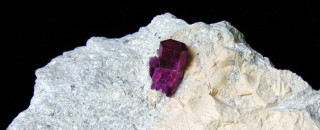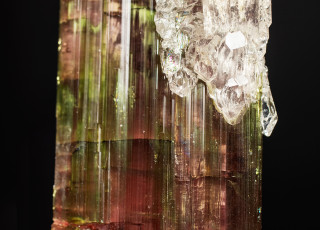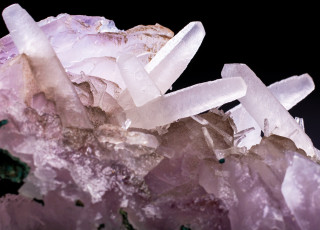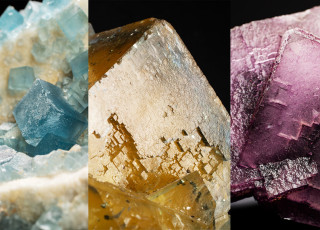NHMU's Hidden Minerals
By Dave Richerson
You might not know it, but in addition to our incredible dinosaur, insect, plant, and anthropology collections, the Natural History Museum of Utah has a "gem" of a mineral collection. This excellent and diversified collection contains more than 5,000 mineral specimens from around the world. Most were donated in the late 1970s and early 1980s by Alfred Buranek, a Utah geologist, author, and mineral collector. Since then, a number of smaller donations have augmented our collection.
You can find a sampling of the best specimens on display in the mineral hall on the third floor of the museum. One floor-to-ceiling exhibit highlights minerals found in Utah. Another titled "All the Colors of the Rainbow" displays large specimens from around the world. Three smaller cases illustrate gemstones and the natural minerals from which they were cut or faceted. Other displays focus on crystal shapes and special characteristics such as:
- Twinning - when separate crystals grow from the same small cluster of atoms to result in crystals that are a mirror image of each other; some form a heart shape, some a cross and even some that look like a fish tail
- Radial growth - when crystals grow outward in all directions from a central point
- Pseudomorphs - a crystal consisting of one mineral but having the form of another which it has replaced; for example, goethite replacing pyrite
- Fluorescence - minerals glow under long-wave and short-wave ultraviolet lights
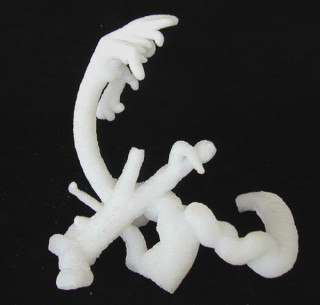
The third-floor display is just a small sampling of the diversity of minerals in the collection. In order to show the whole range of chemical compounds represented by minerals, a cabinet with 45 drawers was installed in the Earth Lab on the 2nd floor. Each drawer contains 16 spaces for specimens and supportive photographs. Forty of the drawers are organized according to their chemistry, ranging from native elements such as gold and silver to tungstates, molybdates and vanadates. In between are sulfides, carbonates, sulfates, phosphates, oxides, silicates and others. The remaining five drawers exhibit specimens collected in Utah. Each drawer is covered with plexiglass so that the specimens can be inspected close up without risk of damage.
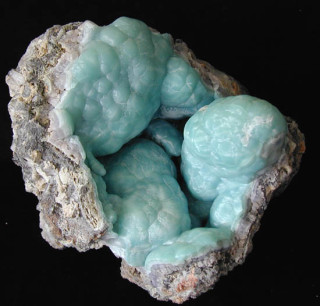
While certainly a great resource for geology students, the Earth Lab drawers are a fabulous way for anyone to explore nature's mineral diversity. Many drawers contain more than one specimen to show the variety of ways minerals occur, including how they often grow alongside and through other minerals. For example, pyrite can form in cubes, octahedrons, pyritohedrons and combinations of crystal forms. Gold can be tiny flakes and grains dispersed in the rock or distinct crystals, wires or ribbons. The chimeric mineral beryl can be green (emerald), blue (aquamarine), yellow (heliador), pink (morganite) or red (red beryl, sometimes called red emerald). Not to be outdone, quartz can be almost any color and can sometimes have inclusions of rutile, chlorite or other crystals.
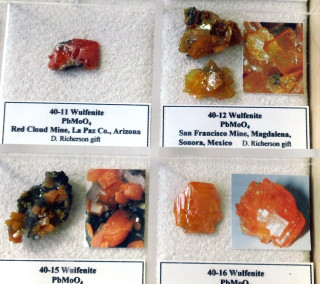
In addition to these rich displays, most of the mineral collection is not on exhibit. Stored in drawers in the Geology and Paleontology Collections storage area, these minerals can be viewed by special arrangement.
In order to better share the less-viewed minerals and fossils in our collection, we are now displaying "Featured Mineral" and "Featured Fossil" through the two windows along the 3rd floor corridor by the elevators. These dispays are changed every one to two months. To date, the minerals calcite, fluorite, benitoite, prehnite and apophyllite have been highlighted.
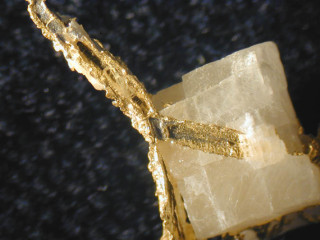
Several projects are in progress for minerals. One is to complete an updated inventory and to enter comprehensive information for each specimen into a new database. A second project is to complete organization of the specimens in the storage cabinets according to their chemistry and to cross reference the location of each specimen with the database. A third project that is just beginning is to establish in two cabinets an archive of specimens from Utah according to county and specific locality. The intent is for this to be a valuable reference and research tool. Unfortunately, many minerals and localities for Utah are not currently represented in the collection. They are probably tucked away in basements and old collections. We are hoping you rock and mineral enthusiasts will come forward to help us access these historical Utah specimens and work with us through donations and information to make the archive collection project a success.
Dave Richerson is a retired associate professor of material science and engineering at the University of Utah. He is the author of the books "Modern Ceramic Engineering" and "The Magic of Ceramics," co-author or co-editor of five other books, and author or co-author of more than 100 technical and educational articles and reports. NHMU is part of the University of Utah in Salt Lake City. Our mission is to illuminate the natural world and the place of humans within it. In addition to housing outstanding exhibits for the public, NHMU is a research museum. Learn more.
